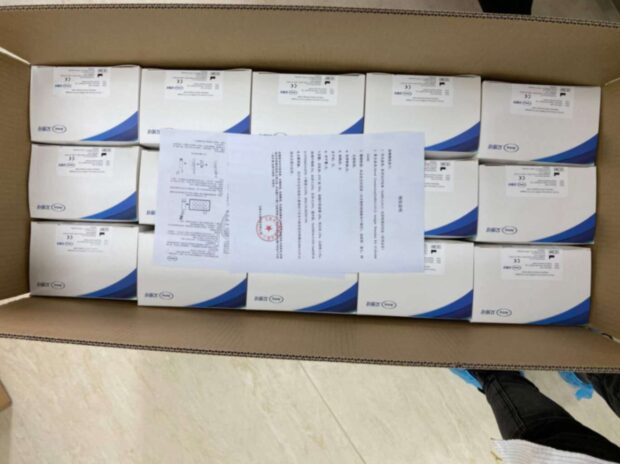D-Dimer FIA Rapid Test

Main Features
- Rapid test in 15 minutes
- With CE Mark
【INTENDED USE】
It is suitable for the in vitro quantitative determination of D-Dimer
in human plasma and whole blood samples.
【PRINCIPLE OF THE PROCEDURE】
This reagent quantitatively detects the content of D-dimer in plasma or whole blood samples by fluorescent immuno-double antibody sandwich method. When the sample is added dropwise to the sample well of the detection card, the D-dimer antigen in the sample and the fluorescent microsphere-labeled D-dimer antibody combine to form a reaction complex. The complex moves forward, captured by the D-dimer antibody on the detection line of the nitrocellulose membrane. The amount of D-dimer in the sample is positively correlated with the signal intensity of the fluorescent antibody.
【MAIN COMPONENTS】
D-Dimer detection card, ID card
Note: The components in the kits of different batches cannot be
mixed to avoid erroneous results.
【STORAGE CONDITIONS AND EXPIRY DATE】
The kit should be stored at 2°C~30°C and protected from light. Do not freeze any of the test kit components. The detection card should be used within 1 hour after being opened under 60% humidity.
See manufacturing date and expiry date on label.
【Applicable instruments】
Avioq Bio-tech Co., Ltd.’s handheld fluorescence immunoassay analyzer HF001, dry-type fluorescence immunoassay analyzer YF201.
The dry fluorescence immunoassay analyzer AFS-1000, the dry fluorescence immunoassay analyzer AFS2000A, and the dry fluorescence immunoassay analyzer AFS3000B of Guangzhou Lanbo Biotechnology Co., Ltd.
【SPECIMEN REQUIREMENT】
1. For human plasma or whole blood samples, other body fluids or samples may not give accurate results.
2. It is recommended to use human plasma for testing.
3. After collection of clinical blood samples, the test must be completed within 4 hours at room temperature; plasma should be stored at 2°C~8°C for no more than 5 days, and frozen at -20°C for no more than 6 months. Whole blood samples cannot be frozen.
If they cannot be detected in time, they should be stored at 2~8°C.
4. Whole blood samples older than 24 hours are not suitable for this reagent.
Cryopreserved samples should be equilibrated to room temperature and mixed well before use.
5. Samples must be returned to room temperature before testing. Cryopreserved samples should be completely thawed, rewarmed, and mixed well before use.

